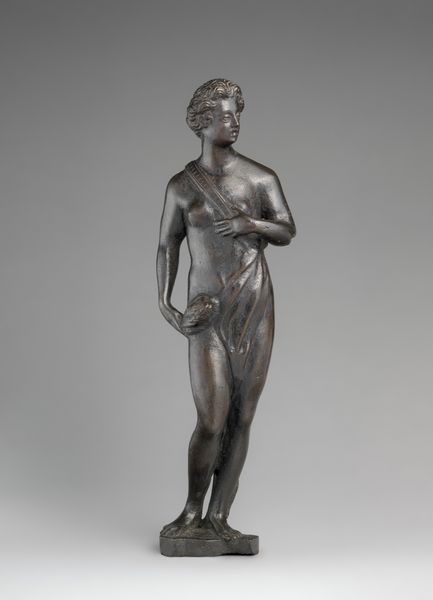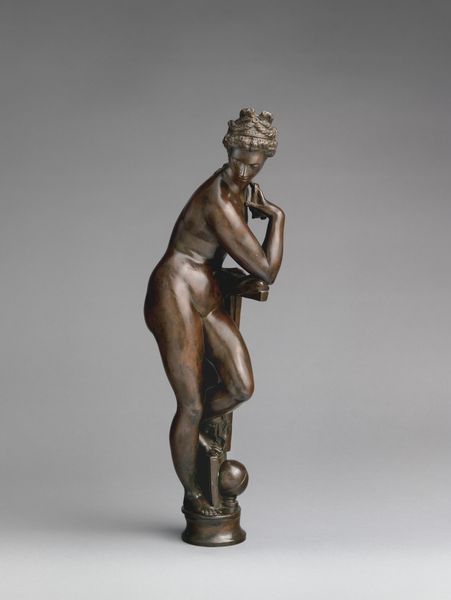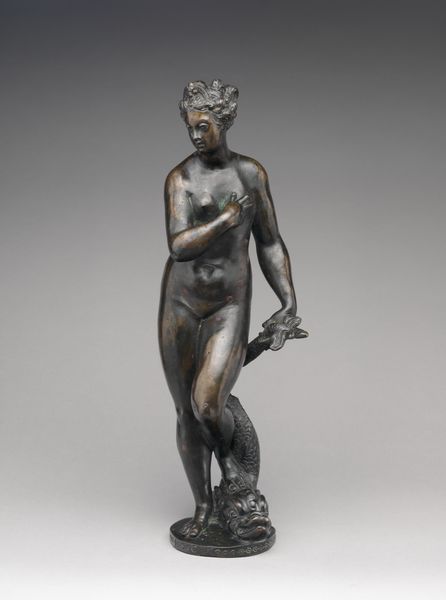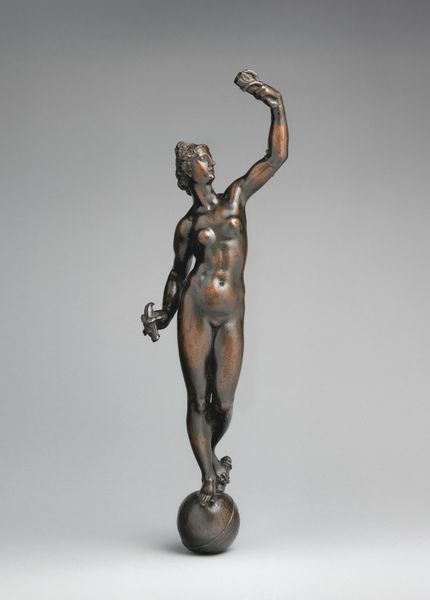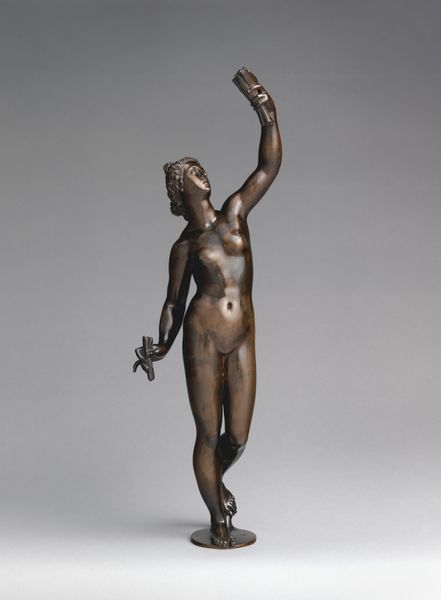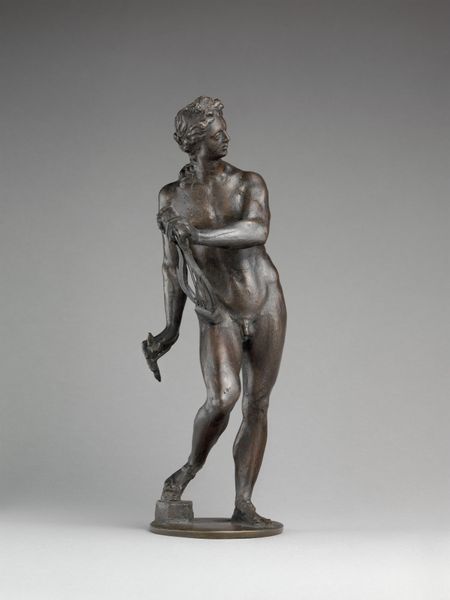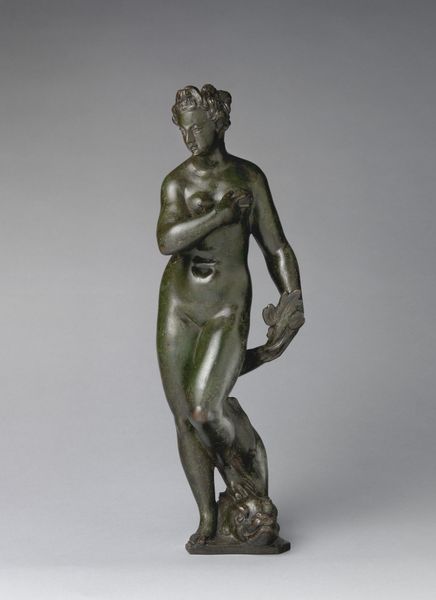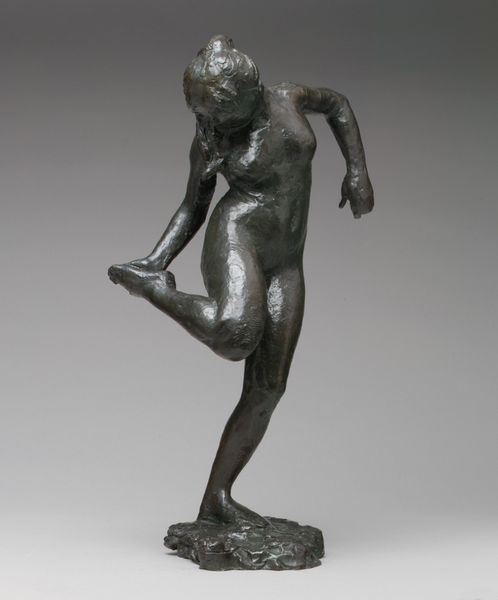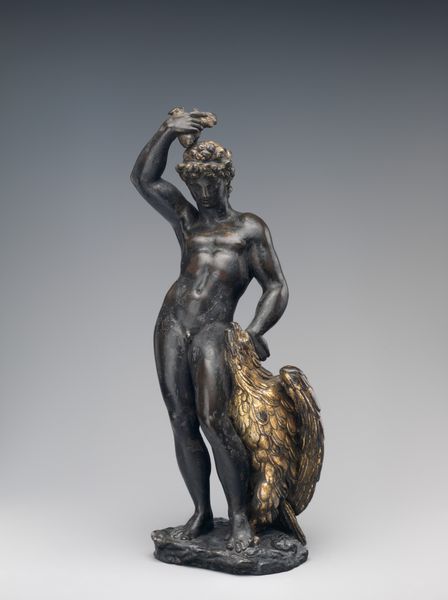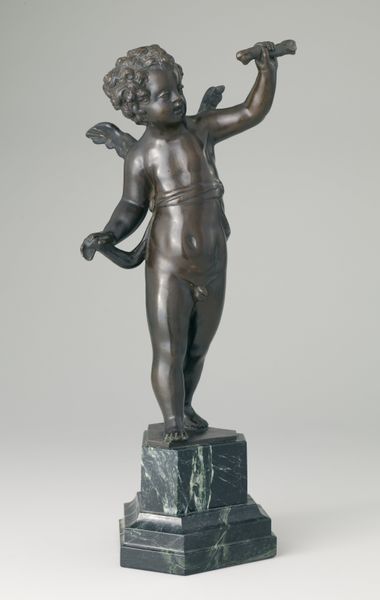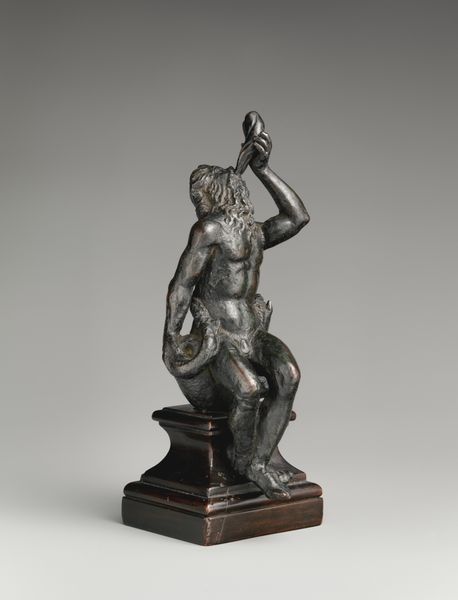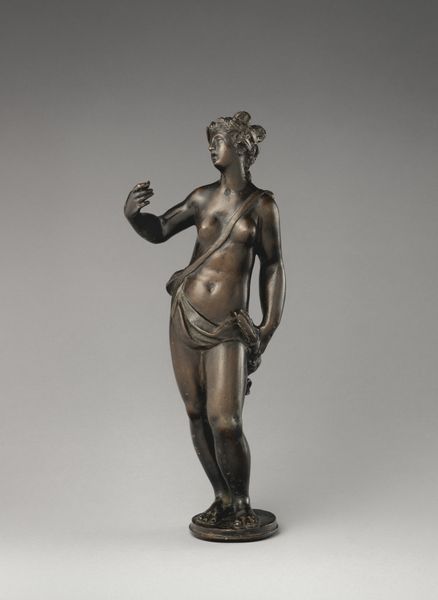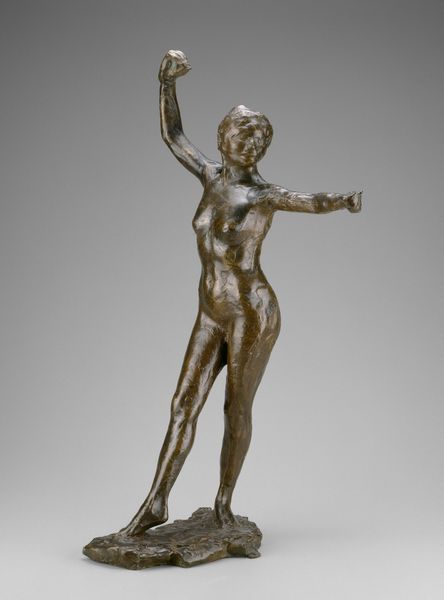
bronze, sculpture
#
portrait
#
allegory
#
baroque
#
sculpture
#
bronze
#
figuration
#
sculpture
#
decorative-art
#
nude
Dimensions: Overall: 14 5/8 × 3 3/4 × 2 5/8 in. (37.1 × 9.5 × 6.7 cm)
Copyright: Public Domain
Editor: Here we have a bronze sculpture called "Ceres" by Niccolò Roccatagliata. It was created sometime between 1600 and 1899. It’s such a striking piece, especially the cool, dark tone of the bronze itself. What’s your take on this work? Curator: The material itself is quite telling. Bronze wasn't merely chosen for its aesthetic qualities; it represented power, wealth, and permanence. The casting process involved skilled labor, resource extraction, and a complex industrial network. The dark tone isn't inherent to the bronze, but a result of patination, another layer of human intervention, of modifying the very elements. How do you see this intersecting with the figure depicted? Editor: That’s a great point. I was initially thinking about Ceres as a Roman goddess of agriculture, but now considering the cost and effort in just creating this sculpture from bronze makes me reconsider. Curator: Precisely! Bronze casting wasn’t accessible to all. This immediately frames Ceres, and what she represents. It transforms an icon into a consumer product. The artist isn't merely representing a deity, but engaging with material constraints and socio-economic dynamics. Considering it's a smaller-scale bronze, perhaps made for a wealthy patron, would you say it diminishes her presence or amplifies the power of its owner? Editor: I suppose it makes her almost like a collectible. Is there any documentation on how these sculptures were typically commissioned or who owned them? Curator: Research into Roccatagliata’s patrons will likely uncover a world of power dynamics. Were these works commissioned as blatant displays of wealth? Were they conversation pieces intended to communicate a cultivated sensibility? It begs us to remember art does not exist in a vacuum. Editor: I never thought about bronze itself carrying so much significance beyond being, well, bronze! I guess looking at what it takes to *make* art adds so many more layers to its meaning. Curator: Exactly. Focusing on materiality allows us to unpack the social relations embedded within a so-called "simple" bronze.
Comments
No comments
Be the first to comment and join the conversation on the ultimate creative platform.

